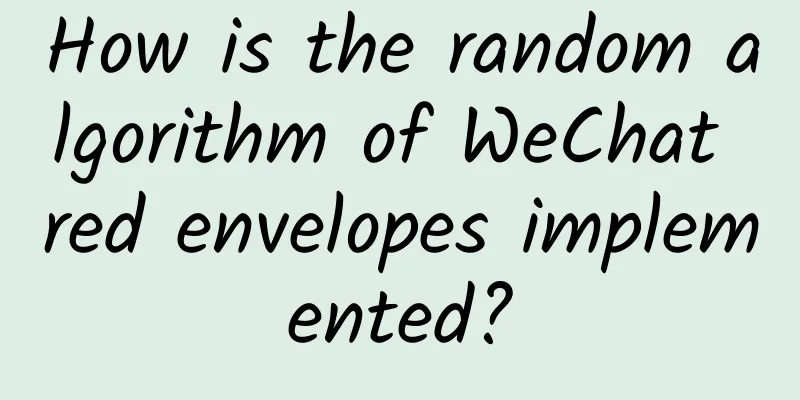How is the random algorithm of WeChat red envelopes implemented?

|
I saw a question on Zhihu: How is the random algorithm for WeChat red envelopes implemented?
Some people say that Tencent achieved this roughly like this:
Some people have also done normal distribution, variance analysis, regression analysis, statistical simulation, etc., but I won’t post it because the picture is too long. However
Let’s change our thinking. Now we change all the money into 1-cent coins, imagine the red envelope as a jar, and then scatter the coins.
Red envelopes are randomly selected for every penny. As for regression analysis and statistical simulation, they are of no use at all. In this example, we abandon traditional concepts such as "drawing" and "random amount", so that money has a sense of choice and performs "random" behavior. Naturally, the red envelope has the attribute of random amount. Change your thinking and don't complicate simple problems. When we design code, we usually consider the logic in real life and abstract objects into classes and behaviors into methods. However, we also need to consider the reversal of thinking occasionally. Of course, my code has certain drawbacks. Thinking is the most important thing. |
<<: Xiaomi Mi A1 releases kernel source code: turns into the little prince of flashing
Recommend
Why did dinosaurs escape the end-Triassic mass extinction? The answer is found
◎ Science and Technology Daily reporter Zhang Ye ...
Why is DOS still important?
Twenty years ago, Jim Hall, an undergraduate physi...
Does Evergrande really want to make cars? Not a single car has been produced, the company has suffered a loss of 4.8 billion yuan in half a year, and its market value has dropped by 80%.
In 2020, Evergrande Group officially announced it...
How to advance a brand? Start with these 3 systems
There is a process for consumers to come into con...
The latest news on the epidemic: 12 new cases of asymptomatic infection in 31 provinces, autonomous regions and municipalities!
From 0:00 to 24:00 on May 2, 31 provinces (autono...
Let's go to the Red Planet. A live streaming sales course (online) that is closer to the truth, helping you run live streaming sales 0-1
Let's go to the Red Planet, a live streaming ...
What does a doctor mean by "light diet"? I bet few people know
Let's do a multiple-choice question first. Wh...
The world has begun researching 6G, 100G/s! Deployment will begin in 2030
[[265644]] According to the 21st Century Business...
How many times can you fold a piece of paper? More than 7 times is really hard!
We have been dealing with paper for many years an...
How can social e-commerce make good use of “Internet celebrity” thinking?
Introduction: It has to be said that the topic of...
Being too clean can sometimes backfire! Don’t try to keep these parts of your body too clean →
recently A topic became a hot search It sparked h...
The city with zero "mortality rate": here, birth and death are "illegal"
Birth, aging, illness and death are the most natu...
Apple and Google's first version of contact tracing software released on April 28
According to foreign media reports, Apple CEO Tim...
How will 360 search advertising promotion information be displayed and what are the conditions for displaying it?
How will my promotional information be displayed?...
How to achieve high conversion rate in event poster copywriting?
How can event posters and poster copy achieve hig...









